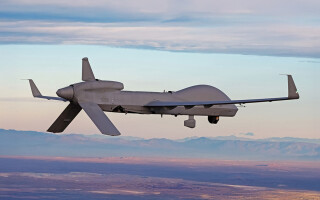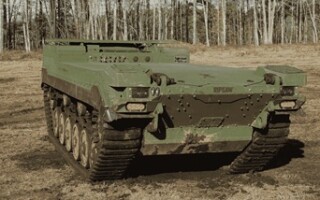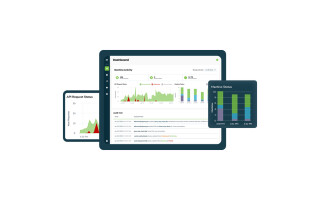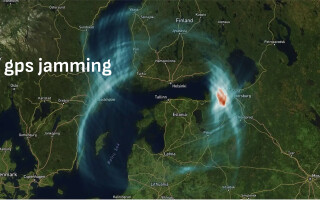GUEST BLOG: Smarter, tougher networking – How AI can help in DDIL environments
BlogJune 11, 2025

The aim of the U.S. Department of Defense (DoD) Combined Joint All-Domain Command and Control (CJADC2) is clear: to enable the military to make faster and better-informed decisions to achieve decision advantage over its adversaries. But the path to that goal is anything but straightforward.
Denied, degraded, intermittent, and limited (DDIL) environments are the reality for modern military communications. Whether it's terrain blockage, electromagnetic interference including adversarial jamming and geolocation, or other line-of-sight or beyond-line-of-sight disruptions, individual communications systems or radios are simply unable to provide a reliable dial tone for the warfighter. Instead, the best path to resilient and reliable communications is through a smart employment of multiple comms systems across a network of networks threaded together like a quilt.
Cross-radio stitching in a geographically dispersed network with U.S. Joint and coalition partners operating across air, land, and sea isn’t easy. The radios, frequencies, antenna technologies, and data link standards vary widely; some data flows are more important than others; the size, classification, and format of the data differ greatly; the required precision and timeliness of data flows vary. The net effect of this complex situation is a military networking environment that cannot be preplanned, cannot be pre-prioritized, and cannot be set-and-forget. Rather, it needs to be dynamic, adaptive, and scalable to ensure resilience and predictability.
But what if AI could help the network think for itself?
Meaningful solutions for communications in DDIL and other challenged environments can now be unlocked by the recent advancements in artificial intelligence (AI).
A smart AI-empowered heterogeneous network can baseline network performance, train rapidly, and teach itself how to add resilience and optimization.
It’s a real capability, available now. The use cases are nearly endless.
- When a link drops every time the wing obstructs the antenna, the AI engine learns to defavor the challenged link before the aircraft turns.
- When satellite communications in one constellation repeatedly drop when the beam orientation overlaps with another constellation, the AI engine de-favors those routes at those orientations.
- When mesh networks fail or demonstrate evidence of being jammed every time they get near an adversarial location, the AI engine de-favors those links in those locations (in favor of links designed for contested environments).
- When a platform with a prioritized appetite for receipt of net enabled weapon information takes off from a carrier, the AI engine favors the links that can reliably pass that time-sensitive information to it.
- And so on…
By feeding the AI engine information about the disparate links like spatial and temporal data, signal strength, throughput, bandwidth, and more, the AI engine can make smarter, faster decisions about routing and link selection. Additionally, by integrating information across the entire OSI stack, the system can optimize at both the hardware and software levels, leading to better visibility, better decisions, and ultimately better network resilience.
This isn’t a thought exercise or science experiment. Modern tactical edge networking architectures already support AI algorithms today. Small-form-factor, software-defined networking controllers are deployed today, co-located on platforms with multiple data links and ready for AI-driven performance gains. These lightweight, multifunction devices can be deployed to the fleet and run on new size, weight, and power (SWaP)-optimized hardware or as code in legacy hardware platforms. No human in the loop is required, and no hardware changes are needed.
These algorithms can detect anomalies, reroute traffic, and self-heal the network, boosting availability and reliability to keep communications flowing, even under stress. Whether it's in the Pacific or a peer-contested electronic warfare (EW) environment, that kind of resilience could be the difference between mission success and failure, especially in support of time-sensitive missions like long-range fires.
In environments where having a real-time Common Operating Picture is essential, these AI-driven networks can help ensure that every node, asset, and decision-maker stays connected to the mission.
Modern missions demand a holistic, multiplatform approach to achieving the CJADC2 vision. The tools exist today to build collaborative, open, and intelligent networking solutions that make heterogeneous networks smarter, tougher, and more ready for the fight.
AI can help transform a fragile multilink network into a resilient one that adapts, endures, and supports the mission, no matter how contested the environment.
Fuse Integration · https://www.fuseintegration.com





